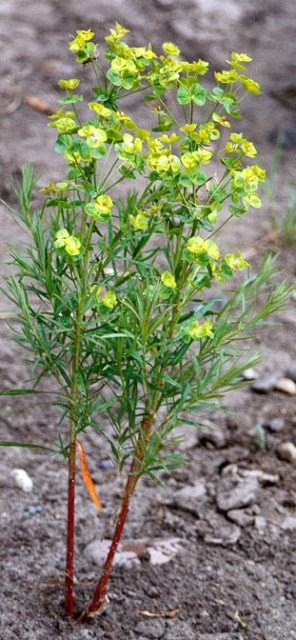
NPS Many invasive plants are controlled through a multi-step process. Leafy spurge is controlled by an application of herbicide in the fall, but also through the introduction of a specific flea beetle. These beetles live on and eat the plant. Beetles lay their eggs on the roots, and when the beetle larvae hatch, they eat the roots. This opens the roots to fungal invasion. It is actually the fungus which kills the leafy spurge. Although not a native species, these beetles eat only leafy spurge and do not affect other plants. Three species of thistles (scotch, musk, and bull) are controlled with herbicides. Houndstongue and mullein are combatted via mechanical means, i.e. pulling and clipping the plants at certain times of their growth cycle. Larger infestations of these plants can also be treated chemically. Whenever the park decides that a chemical treatment will be most effective, they use herbicides which attack the specific plant they are treating. This creates a minimal or no impact on the native plants and ecosystem. The National Park Service is under mandate from the Noxious Weed Act of 1974 to control these types of plants. This also applies to states, and Wyoming has their own program to manage noxious weeds. Since humans are the primary vector by which invasive species are transported, we also educate the public about how they can help prevent their spread. Plants like houndstongue have "hitchhiking seeds" which attach easily to clothing and hair, allowing them to quickly move long distances. |
Last updated: September 29, 2025
